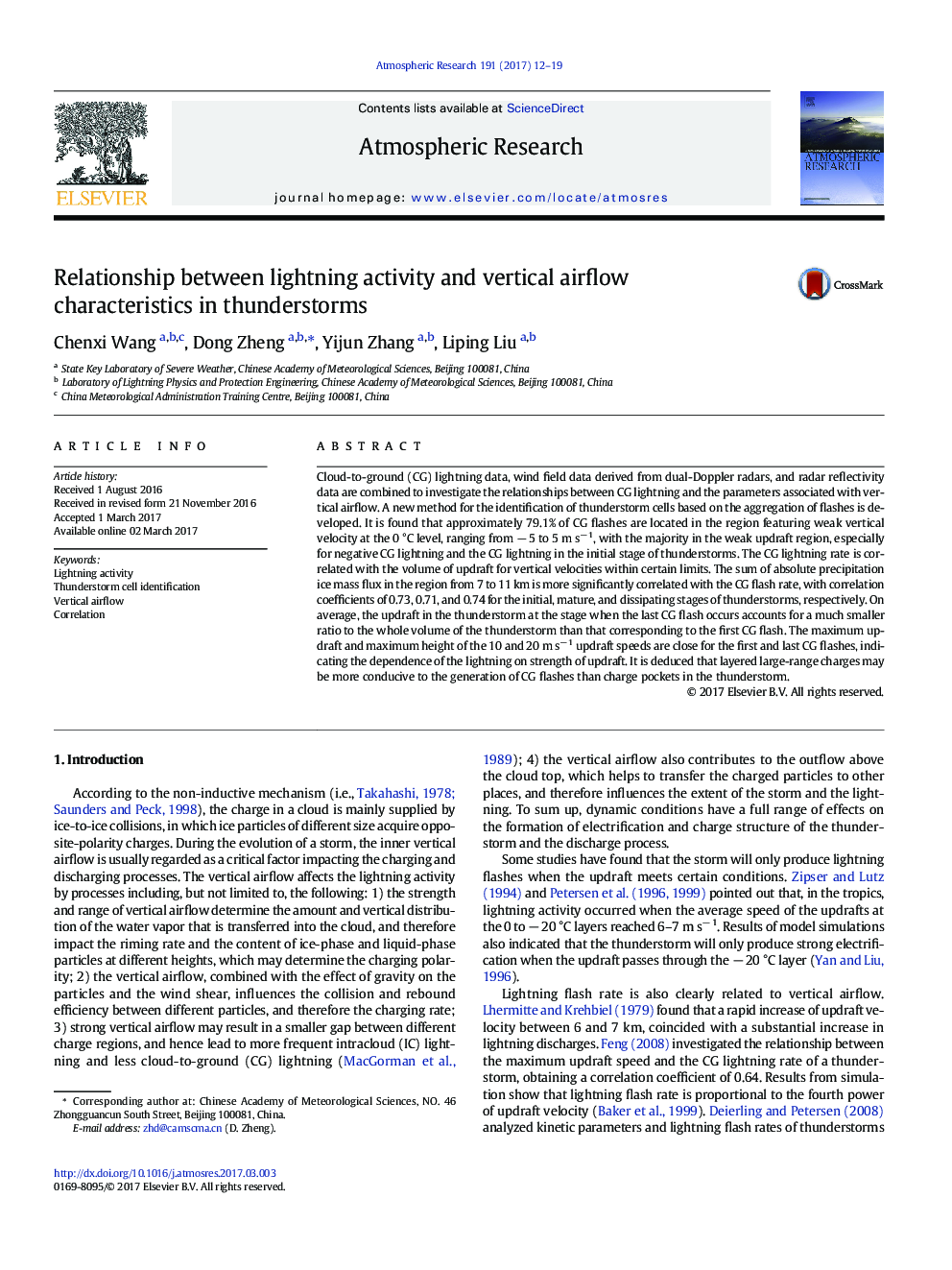| Article ID | Journal | Published Year | Pages | File Type |
|---|---|---|---|---|
| 5753793 | Atmospheric Research | 2017 | 8 Pages |
Abstract
Cloud-to-ground (CG) lightning data, wind field data derived from dual-Doppler radars, and radar reflectivity data are combined to investigate the relationships between CG lightning and the parameters associated with vertical airflow. A new method for the identification of thunderstorm cells based on the aggregation of flashes is developed. It is found that approximately 79.1% of CG flashes are located in the region featuring weak vertical velocity at the 0 °C level, ranging from â 5 to 5 m sâ 1, with the majority in the weak updraft region, especially for negative CG lightning and the CG lightning in the initial stage of thunderstorms. The CG lightning rate is correlated with the volume of updraft for vertical velocities within certain limits. The sum of absolute precipitation ice mass flux in the region from 7 to 11 km is more significantly correlated with the CG flash rate, with correlation coefficients of 0.73, 0.71, and 0.74 for the initial, mature, and dissipating stages of thunderstorms, respectively. On average, the updraft in the thunderstorm at the stage when the last CG flash occurs accounts for a much smaller ratio to the whole volume of the thunderstorm than that corresponding to the first CG flash. The maximum updraft and maximum height of the 10 and 20 m sâ 1 updraft speeds are close for the first and last CG flashes, indicating the dependence of the lightning on strength of updraft. It is deduced that layered large-range charges may be more conducive to the generation of CG flashes than charge pockets in the thunderstorm.
Keywords
Related Topics
Physical Sciences and Engineering
Earth and Planetary Sciences
Atmospheric Science
Authors
Chenxi Wang, Dong Zheng, Yijun Zhang, Liping Liu,
